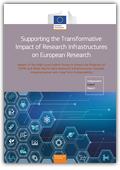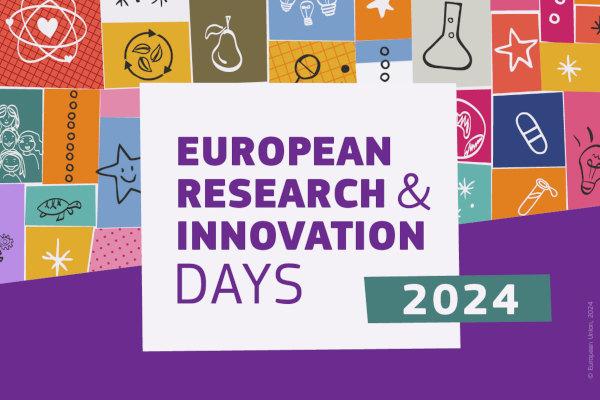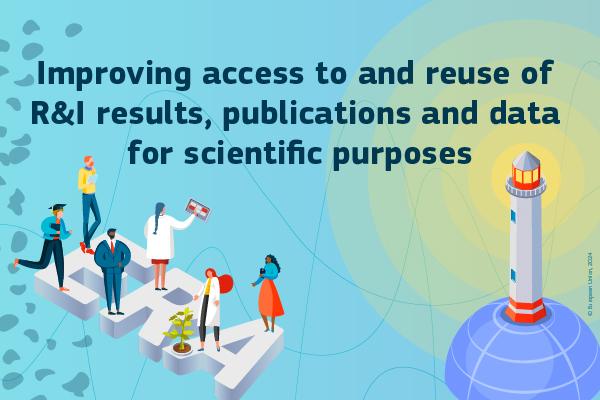What are Research Infrastructures?
Research Infrastructures are facilities that provide resources and services for research communities to conduct research and foster innovation.
They can be used beyond research e.g. for education or public services and they may be single-sited, distributed, or virtual.
They include
- major scientific equipment or sets of instruments
- collections, archives or scientific data
- computing systems and communication networks
- any other research and innovation infrastructure of a unique nature which is open to external users
What the Commission is doing
The Commission defines, evaluates and implements strategies and tools to provide Europe with world-class sustainable Research Infrastructures.
The Commission does this while coooperating closely with EU countries and countries associated to Horizon 2020. It also ensures that these research infrastructures are open and accessible to all researchers in Europe and beyond.
Key objectives
- reduce fragmentation of the research and innovation ecosystem
- avoid duplication of effort
- better coordinate the development and use of Research Infrastructures
- establish strategies for new pan-European, well-established intergovernmental or national Research Infrastructures
- join forces internationally to construct and run large, complex or expensive infrastructures, respond to global challenges and/or foster combining skills, data and efforts of the world's best scientists
- foster the innovation potential of Research Infrastructures by making industry more aware of opportunities offered to improve their products and by the co-development of advanced technologies e.g. ATTRACT
- use Research Infrastructures for science diplomacy - using science collaboration to address common problems and build partnerships internationally e.g. SESAME in Jordan and EU-CELAC in Latin America
The Commission also provides the charter for access to research infrastructures which sets out principles and guidelines when defining access policies for Research Infrastructures.
Initiatives, strategies and networks
European Strategy Forum on Research Infrastructures (ESFRI)
Tthe ESFRI develops a strategic roadmap identifying investment priorities in European Research Infrastructures for the next 10-20 years.
European Research Infrastructure Consortium (ERIC)
A specific legal form that facilitates the establishment and operation of Research Infrastructures.
Group of Senior Officials (GSO)
Global group of experts that takes stock of the existing situation of global Research Infrastructures and explores new collaboration opportunities.
European Open Science Cloud (EOSC)
Cloud database for research in Europe.
EIROforum
Collaboration agreement to combine resources, facilities and expertise of its member organisations to support European science
Association of European-Level Research Infrastructures Facilities (ERF-AISBL)
A not-for-profit association promoting the development and visibility of European infrastructures providing access to external users.
The ERF members are open at an international level and include national infrastructures as well as European networks and consortia of research infrastructures. Every year the ERF member organisations serve over 20,000 academic and industrial users from Europe and overseas.
OECD Global Science Forum (GSF)
The Commission is part of 2 working groups
- GSF working group on Research Infrastructure sustainability - to ensure coherence and complementarity with the long term sustainability effort conducted at European level
- GSF working group on the socio-economic impact of Research Infrastructures which aims to reach an understanding at international level of the principles and processes to be followed when addressing the socioeconomic impact of any Research Infrastructure
More about the Global Science Forum
Long term sustainability of Research Infrastructures
The Commission supports setting-up long term sustainable infrastructures and has identified issues and measures in consultations, working documents and workshops to achieve this goal.
- General publications
- Directorate-General for Research and Innovation
Documents related to sustainable European Research Infrastructures
Funding opportunities
Funding opportunities in Research Infrastructures, include EU funding from
- Horizon 2020 including the InnovFin funding scheme supported by the EIB group
- European Structural and Investment Funds (ESI Funds)
- the European Fund for strategic Investments (EFSI)
Projects and results
Research project database (CORDIS)
The Commission's primary portal for results of EU-funded research projects. Here you can find Research Infrastructure projects related to Research Infrastructures.
Examples of Research Infrastructure projects
Documents

- Report
- Directorate-General for Research and Innovation
A thorough assessment of EU support to the preparatory phase of pan-European Research Infrastructures
Latest
- News article
INFRAFRONTIER ERIC and LOFAR ERIC have been set up on 22 December 2023. The European landscape counts now 28 European Research Infrastructure Consortia.
- 1 min read
- News article
The BSBF is looking for research infrastructures that want to announce their procurement plans to industry in Trieste next year, 1-4 October 2024.
- 1 min read
- News article
The third Report on the European Research Infrastructure Consortium (ERIC) Regulation, adopted on 14 August 2023, shows that ERIC has become a legal instrument of choice for a large part of European initiatives.
- 1 min read



